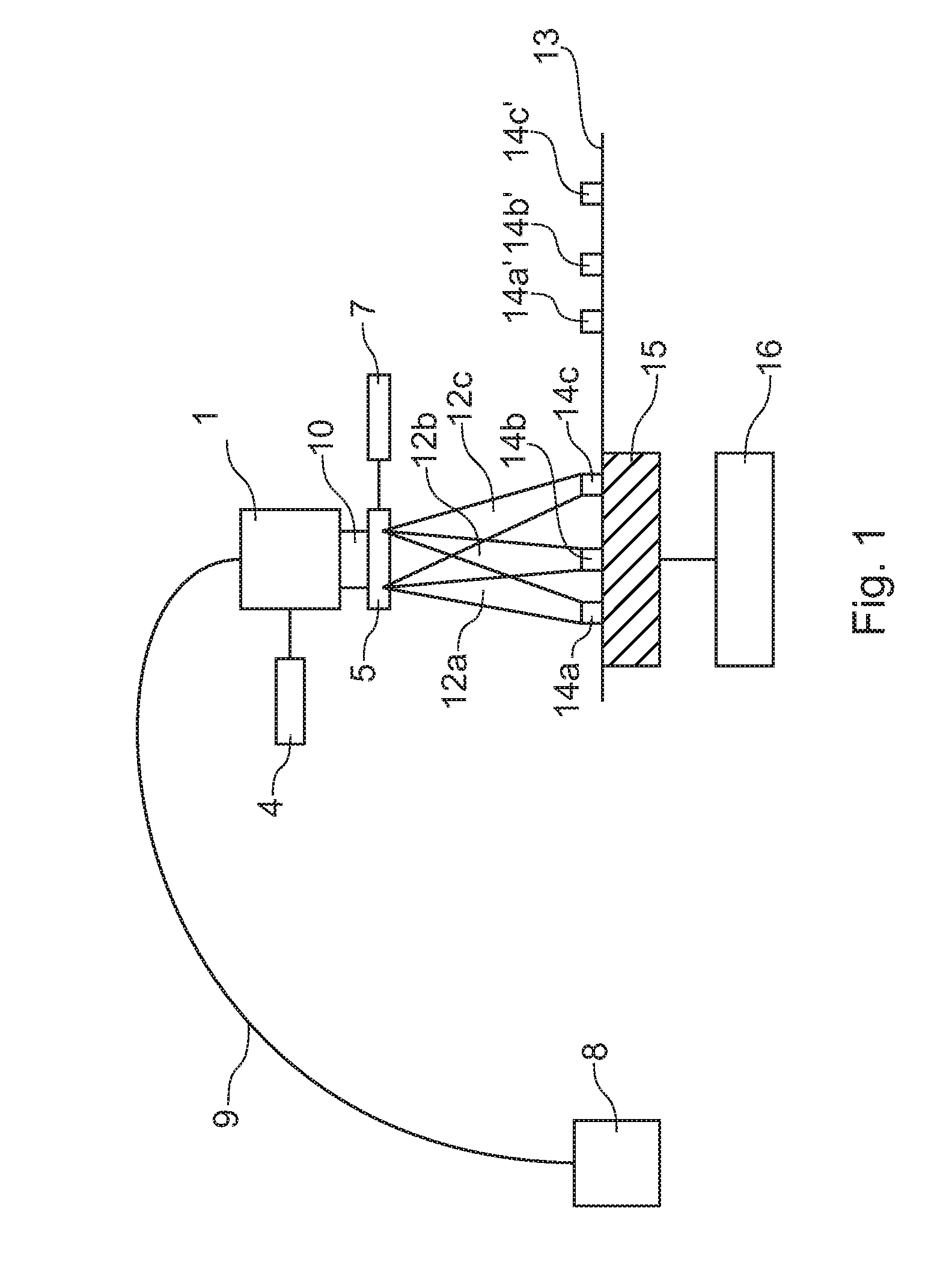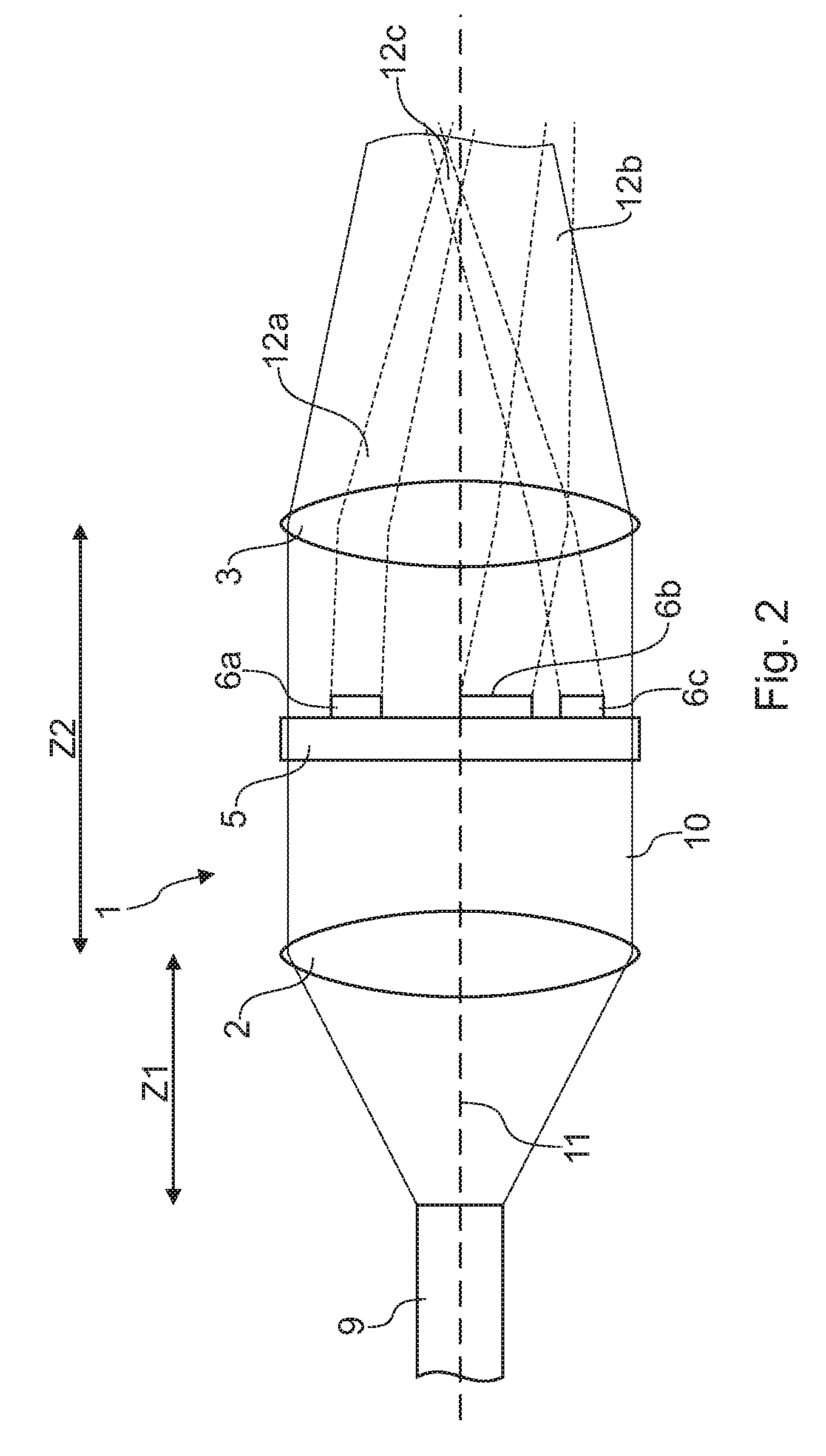Process and apparatus for joining at least two elements
a technology of two elements and processes, applied in the direction of laser beam welding apparatus, electrical apparatus, printed circuit manufacturing, etc., can solve the problems of high thermal load of components to be soldered during reflow soldering, high soldering temperature, and increased temperature of micro-electronic components
- Summary
- Abstract
- Description
- Claims
- Application Information
AI Technical Summary
Benefits of technology
Problems solved by technology
Method used
Image
Examples
Embodiment Construction
[0044]Referring to FIG. 1 the laser beam of a diode laser 8 is coupled into an optical fiber 9 and is directed towards an apparatus comprising a processing head supporting an imaging optics 1 with an associated diffractive optical element (DOE) 5. The input light beam 10 is divided into a plurality of partial light beams 12a-12c by the imaging optics 1. At the same time, these partial light beams 12a-12c are focused. The distance between the processing head and the printed circuit board (PCB) 13 is therefore adjusted in accordance with the focal length of the imaging optics 1 and the desired diameter of the beam spots on the printed circuit board 13. E.g. a distance between the processing head and the work piece to be processed of the order of about 10 cm to about 50 cm has been implemented. According to FIG. 1, a plurality of components (not shown) are disposed on the printed circuit board 13 in a periodic configuration, of which only respective three contact pins 14a, 14b, 14c for...
PUM
| Property | Measurement | Unit |
|---|---|---|
| diameter | aaaaa | aaaaa |
| diameter | aaaaa | aaaaa |
| surface tension | aaaaa | aaaaa |
Abstract
Description
Claims
Application Information
 Login to View More
Login to View More - R&D
- Intellectual Property
- Life Sciences
- Materials
- Tech Scout
- Unparalleled Data Quality
- Higher Quality Content
- 60% Fewer Hallucinations
Browse by: Latest US Patents, China's latest patents, Technical Efficacy Thesaurus, Application Domain, Technology Topic, Popular Technical Reports.
© 2025 PatSnap. All rights reserved.Legal|Privacy policy|Modern Slavery Act Transparency Statement|Sitemap|About US| Contact US: help@patsnap.com



